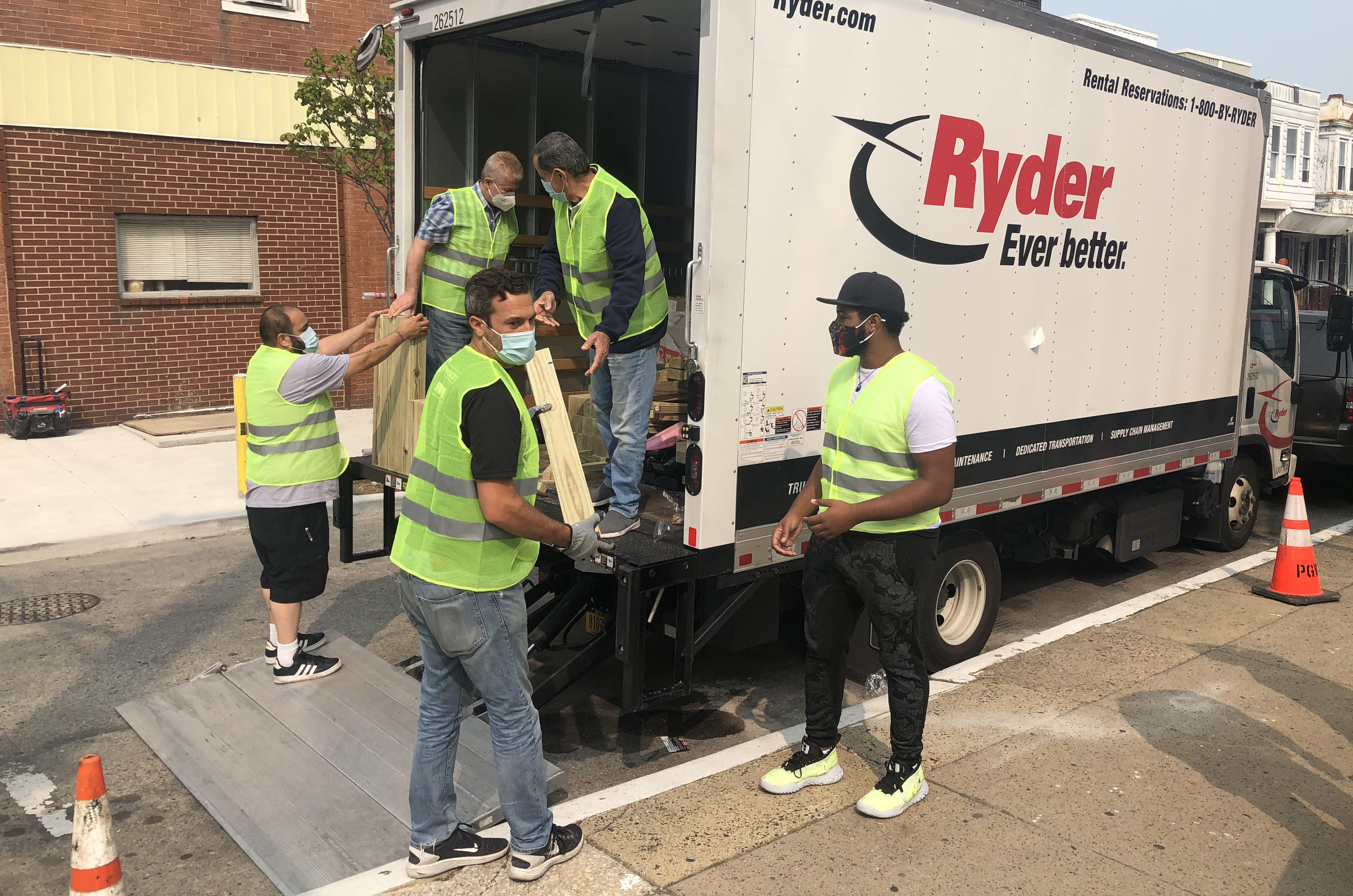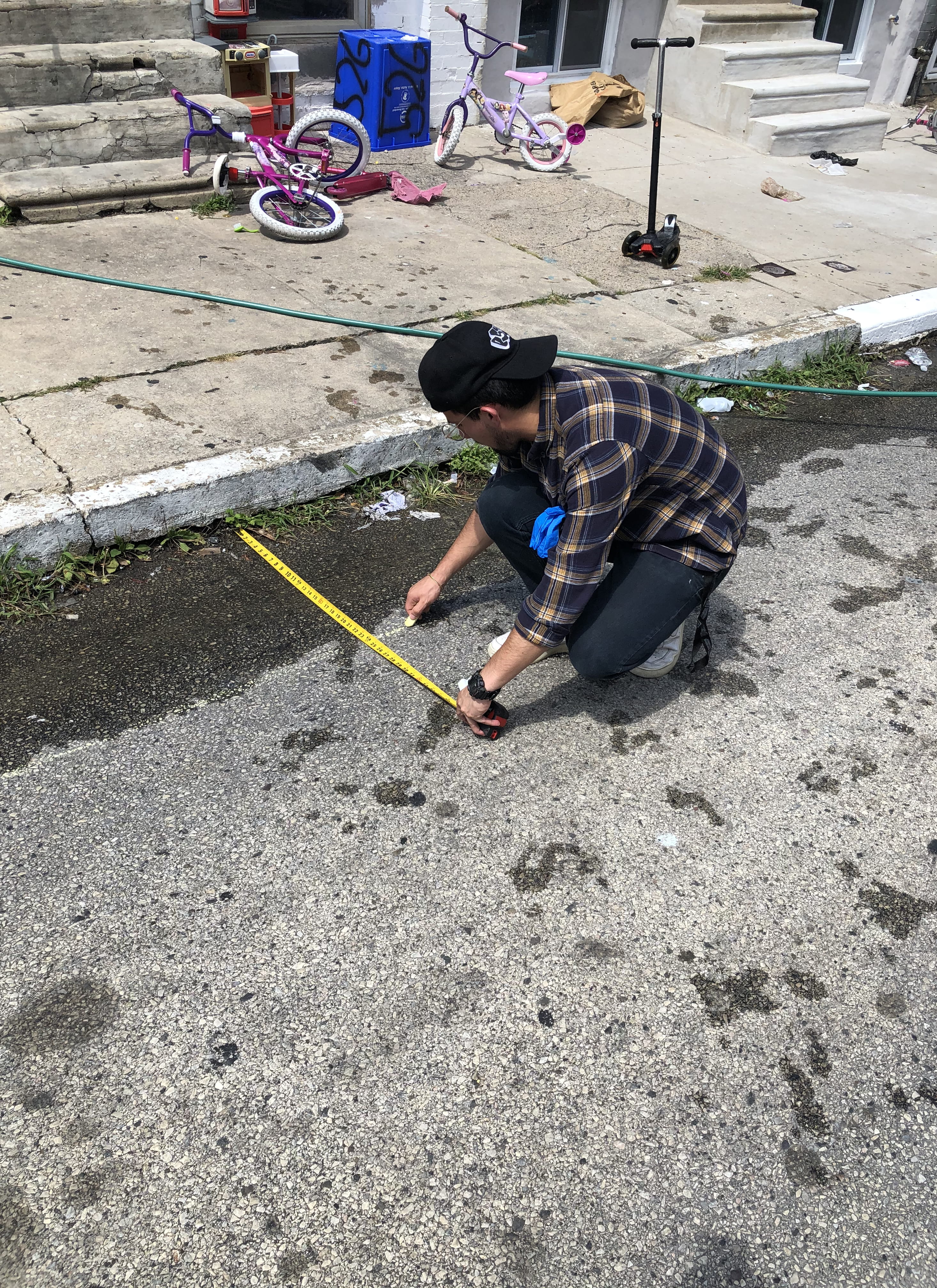Beating the Heat — Safely and Sustainably — During the Pandemic

Researchers from Drexel's College of Engineering, working with community members from Hunting Park, are installing sustainable cooling centers for the neighborhood.
When public pools and many cooling centers closed this summer due to COVID-19, Drexel University researchers teamed up with the William Penn foundation and members of the Hunting Park community to come up with strategies to safely and sustainably beat the heat.
The neighborhood cooling project, led by Franco Montalto, PhD, a professor in Drexel’s College of Engineering, who studies sustainability in urban areas, brought community members together to design, build and monitor the effectiveness of different strategies to cool the 4400 block of North Marshall Street. With support from the William Penn Foundation, Montalto hired community members to help design and build cooling structures, including sprinklers, planters and umbrellas, and to monitor their effectiveness after installation.

“The impacts of extreme heat on public health came to the forefront this summer, given that libraries, cooling centers and other public air-conditioned spaces were closed due to social distancing guidelines during the pandemic,” said Montalto, who also leads the North American Hub of the Urban Climate Change Research Network. “With this project we hoped to not only provide respite from extreme heat events, but also to develop a replicable model for how to engage, and indeed even employ, urban residents in the implementation of neighborhood resilience strategies.”
Philadelphia typically operates hundreds of public cooling spaces and provides a number of options where people can escape the heat – from public pools and “spray grounds” to air-conditioned cooling centers and extended hours at libraries. But this summer, the pandemic prevented the city from operating many of its regular heat-relief efforts.
The Drexel researchers worked with the Philadelphia Office of Sustainability and Esperanza, a faith-based, non-profit community group based in Hunting Park — who have been leading the effort to address the extreme heat challenges in Hunting Park as part of the city’s Beat the Heat Hunting Park initiative.
“Data shows our residents suffer from the hottest temperatures in the city, on average, and are already vulnerable due to economic disadvantage and other marginalizing factors. COVID-19 worsened the situation this year,” said Jodi Reynhout, Esperanza’s vice president of Strategic Initiatives. “Through a comprehensive intervention strategy, including the very important project Drexel brought to the table, we can continue to act in a data-informed and strategic way to ensure the health and safety of our families.”

The Beat the Heat Hunting Park Steering Committee helped identify the block for the project and the team of Drexel researchers and community members came up with the mix of cooling strategies that would be most effective in the neighborhood.
“It was exciting for me that we were picked to have this project with Drexel and Beat the Heat. I think it’s important work and I’m happy that our block was the first one to help do it,” said Priscilla Johnson, block captain of the 4400 block of North Marshall Street. “Our block is very hot in the summer, there aren’t any trees and the water plug is pretty far away. People just don’t come outside because you’re directly in the sun with nowhere to sit and no shade.”
To help guide the project, the team worked with Johnson to distribute surveys and connect with community members to learn about the cooling techniques they wanted, and thought would work best. Through the research and planning process the group decided on a water-saving sprinkler system and a series of planter-benches to which shade umbrellas could be attached.

Drexel structural engineering professor Aspasia Zerva, PhD, helped to design the structures and worked with the team to ensure they would also be resilient against climate conditions other than the extreme heat.
“Early in the project, we had a number of high wind events in Philadelphia. We need to make sure that shade structures are secure and do not pose a hazard during strong winds, such as might occur during a hurricane. We don’t want to reduce one risk while we create another,” Zerva said.
To monitor the effectiveness of the cooling strategies, the team installed air temperature and humidity sensors and developed a mobile app through which local residents could record surface temperature and usage of the cooling strategies.
“We wanted to use this pilot to evaluate the feasibility and effectiveness of different cooling strategies in Philadelphia. We were interested in the urban design hurdles that would need to be overcome, the extent to which residents would be interested in participating in the program, and how well these strategies work,” Montalto said. “We’ve learned a lot about how to engage and employ community members, costs, logistical considerations and the potential for aligning climate adaptation needs with other economic, social, and ecological sustainability goals.”
Montalto notes that, as is the case with many public health concerns related to climate change, extreme heat is also a racial justice and social equality issue, because people of color, and residents with lower income, have historically been forced to live in the hottest areas of the city. These neighborhoods, Hunting Park among them, are more likely to be surrounded by pavement, without shade trees or heat-sapping vegetation. As a result, their hot summer days can be as much as 22 degrees Fahrenheit warmer than other areas of the city, according to Philadelphia’s Office of Sustainability.
Some of the monitoring data this summer show a difference of more than 30 degrees Fahrenheit between the surface temperature of exposed street surfaces and those wet by sprinklers and shaded by vegetation.
This project seeks to address the issues by empowering community members with the information, support and funding they need to make their neighborhood more resilient. Montalto’s Sustainable Water Resource Engineering Lab at Drexel is planning to study this project and expand this effort to more climate-vulnerable urban neighborhoods.
Drexel News is produced by
University Marketing and Communications.
